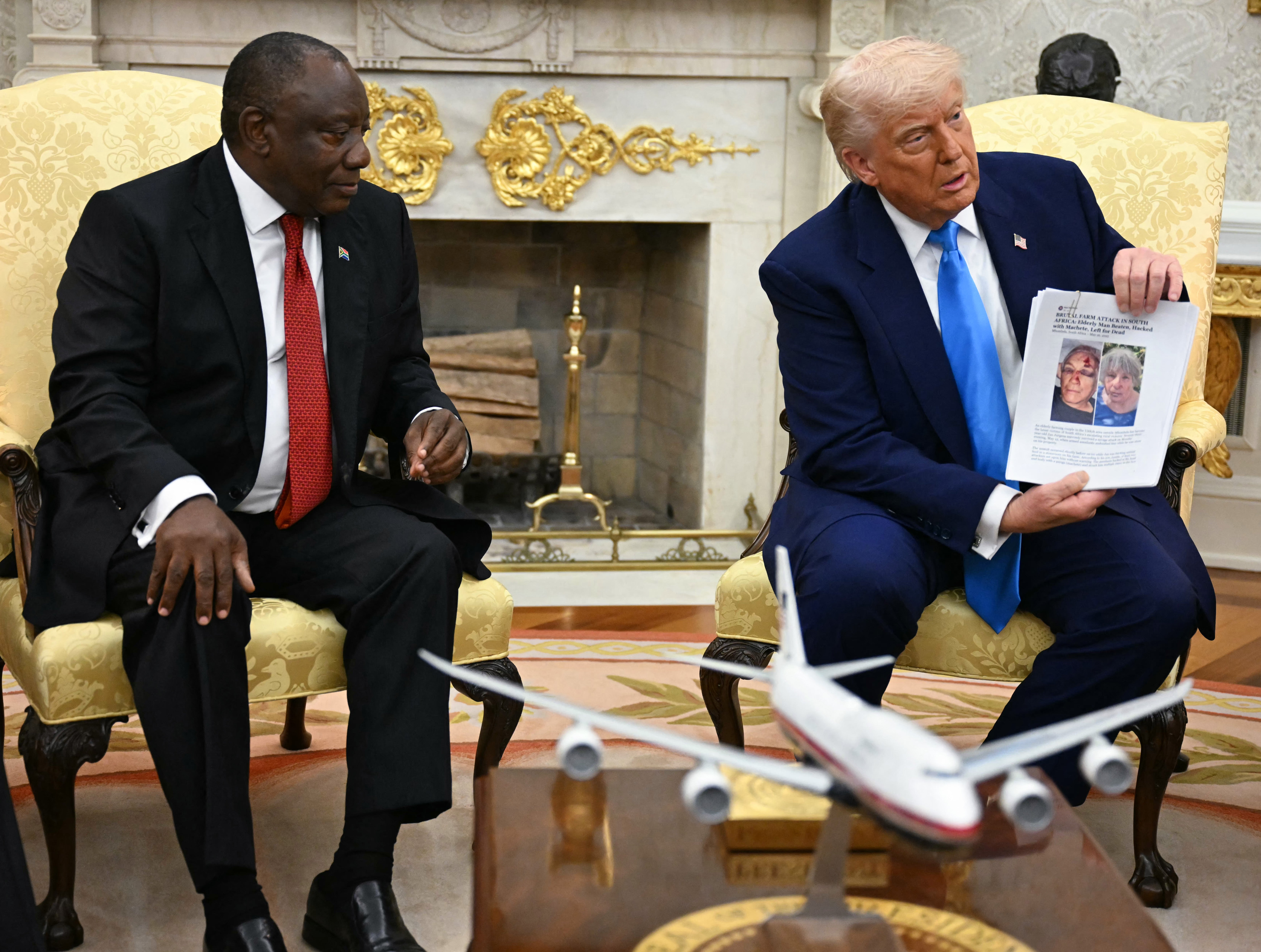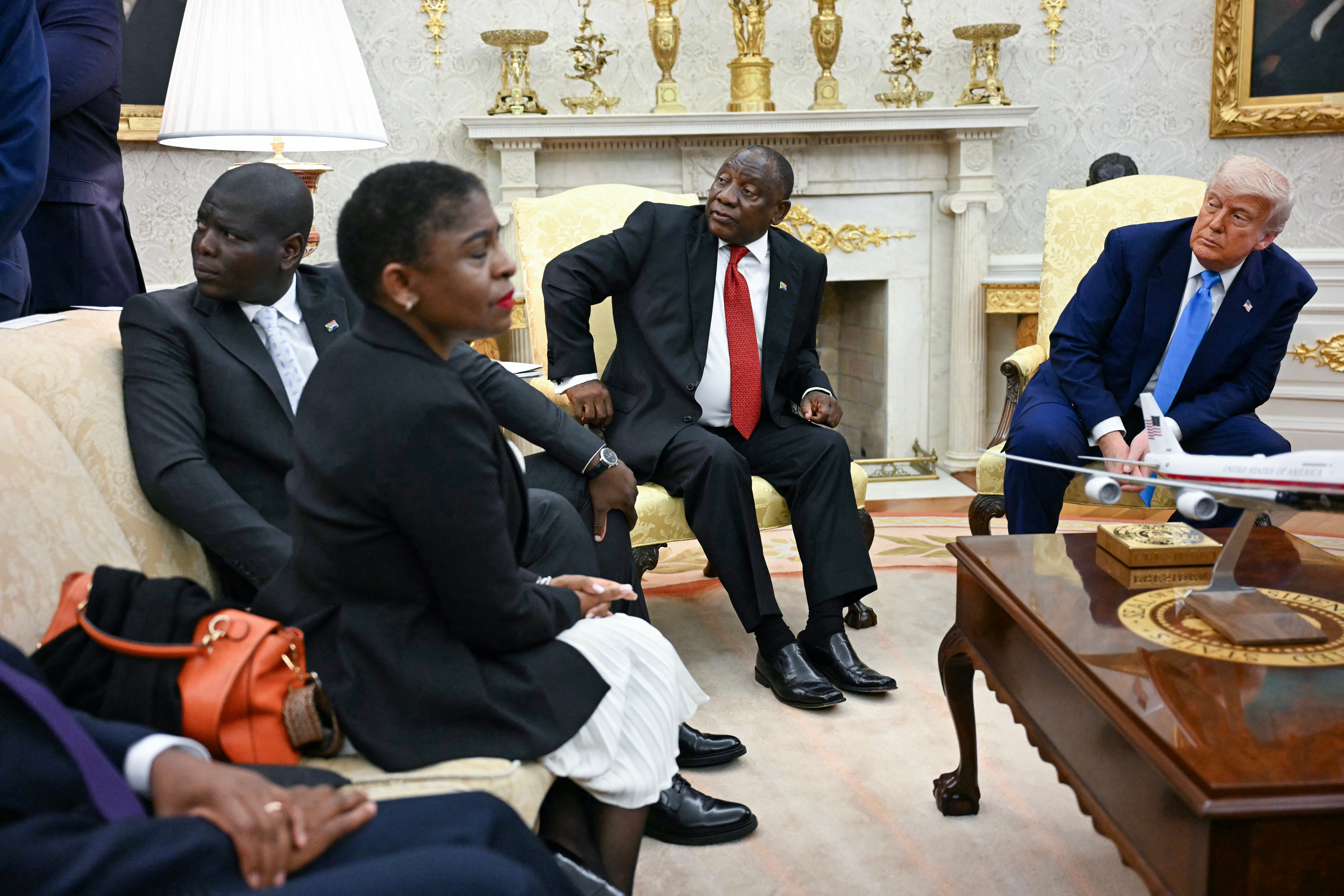ARTICLE AD BOX
A meeting between President Donald Trump and South African President Cyril Ramaphosa which the South African leader said was intended to “reset” the relationship between both governments after months of tensions appeared to go off the rails when Trump confronted Ramaphosa with inflammatory videos and news articles which he alleged to be evidence of “genocide” against white South Africans.
The Oval Office session had been largely calm and filled with complements delivered from both Trump and Ramaphosa when the American leader was asked what it would take for Ramaphosa to convince him that no such “genocide” was taking place.
Trump directed staff to play a video, which included footage of Julian Malema, the leader of the Economic Freedom Fighters party, in which Malema repeatedly exhorts followers at a rally.to “kill the farmer” and “kill the Boer.”
After the video was finished, Ramaphosa told Trump that Malema, while a member of his country’s parliament, doesn’t wield any authority and isn’t part of the government.
“We have a multi party democracy in South Africa that allows people to express themselves, political parties to adhere to various policies. And in many cases, or in some cases, those policies do not go along with government policy. Our government policy is completely, completely against what he was saying, even in the Parliament, and they're a small minority party which is allowed to exist in terms of our Constitution,” he said.

The meeting between Trump and Ramaphosa, which was arranged at the request of the South African government, comes after months of tensions between Washington and Pretoria over a controversial law permitting expropriation of land without compensation in some limited circumstances.
The president claims white South Africans are victims of “genocide,”echoing a white supremacist conspiracy theory alleging immigration and forced assimilation threaten the existence of white people — a claim that has fueled racist hate and violence against minority groups as well as parallel conspiracy theories like the so-called “great replacement” theory.
Trump has repeatedly cited the land expropriation law as he has compared efforts by the South African government to combat racial inequalities from apartheid to anti-white discrimination, and South African officials have accused the administration of using claims from white Afrikaners to undermine the country’s genocide case against Israel now before the International Court of Justice.
White Afrikaners, descendants of Europeans who arrived in the country centuries ago, claim to have been denied jobs and become targets of violence for their race — claims that exploded with new legislation regulating property expropriation.
Viral misinformation claimed dozens of daily murders of white farmers. But it’s been estimated that roughly 50 farmers total, from all racial groups, were killed annually in a country that recorded more than 19,000 murders between January and September 2024.

Citing that misinformation, Trump announced in February he was cutting off funding to South Africa — most of which goes to efforts to combat HIV/AIDS — because the government was “confiscating land” and “treating certain classes of people very badly.” He has also threatened to boycott the Group of 20 leader’s summit, which South Africa is set to host in Johannesburg this November.
His administration also made an exception to its’ policy freezing the admission of refugees to the United States for a group of Afrikaner farmers, who arrived in Washington earlier this month. The group of 59 were granted asylum on Trump’s orders.
When Trump was asked last week by reporters why the Afrikaners were given priority refugee status over other victims fleeing war or famine in Africa. The President simply said Afrikaners were being killed, without providing any evidence.
“It's a genocide that's taking place," he said at the White House, adding that there was no favourability based on the colour of their skin, “[it] makes no difference to me,” he added.









 English (US) ·
English (US) ·